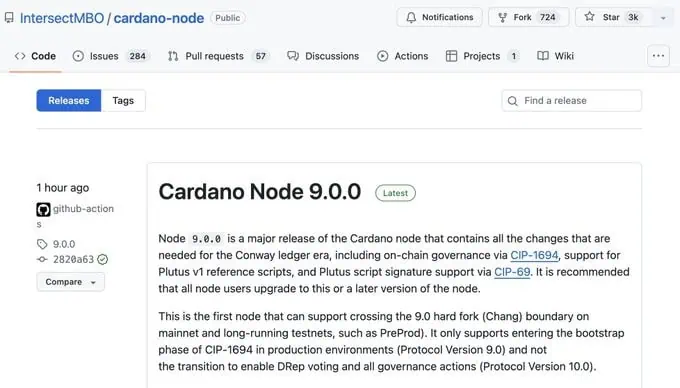You are here: Home / News / Cardano 9.0 Unleashes On-Chain Governance

Cardano blockchain is set to deploy the final version of node 9.0. Once 70% of stake pool operators upgrade, a hard fork will be initiated, activating the complete on-chain governance system. Founder Charles Hoskinson recently spoke on the implementation of this ambitious project. He emphasized that on-chain governance is paramount to maintaining competitiveness and operational efficiency.

On-chain governance, when executed correctly, allows for rapid upgrades, ensuring the system remains competitive and relevant. It enables decentralized management of various functions, including adoption, branding, marketing, development, research, and even national defense.
However, implementing on-chain governance comes with its hurdles. Hoskinson highlighted the complex set of challenges, the team encountered, for instance, obtaining consensus among a diverse group of participants across the globe. To address these challenges, the Cardano ecosystem spent two years developing SIP 1694, named after Voltaire’s birth year.
This proposal aims to achieve three key outcomes: creating an effective, efficient, and high-integrity government. Hoskinson called this “the governance trilemma” which is he claims difficult to achieve fully, but is effective and efficient.
The founder also outlined the meticulous process involved in creating the groundbreaking on-chain governance model. First, it began by drafting a blockchain constitution—an on-chain representation of fundamental rights specific to decentralized applications [dApps] and users. Unlike human rights, he stated, these blockchain rights are tailored to the unique context of the blockchain ecosystem.
Cardano Adopts Liquid Democracy and Constitutional Republic
The next goal was to build effective institutions to support this governance. These institutions would be required to break down complex issues like budgets, hard forks, and protocol parameter changes to a state where they could be voted on efficiently. Without such mechanisms, the governance system would lack efficacy and efficiency.
In a bid to represent the diverse community, Cardano adopted a constitutional republic model with elected representatives and integrated it with liquid democracy—a dynamic governance model. In this system, delegates [dReps] are registered, and users can delegate their voting power to them, which can be revoked at any time, allowing power to fluctuate on an epoch-by-epoch basis.
These elements form the backbone of SIP 1694, the proposed governance model. The journey to this point involved a comprehensive proto-design, followed by 25 workshops in over 20 countries, numerous iterations, and extensive testing on the Sancho Net testnet.
